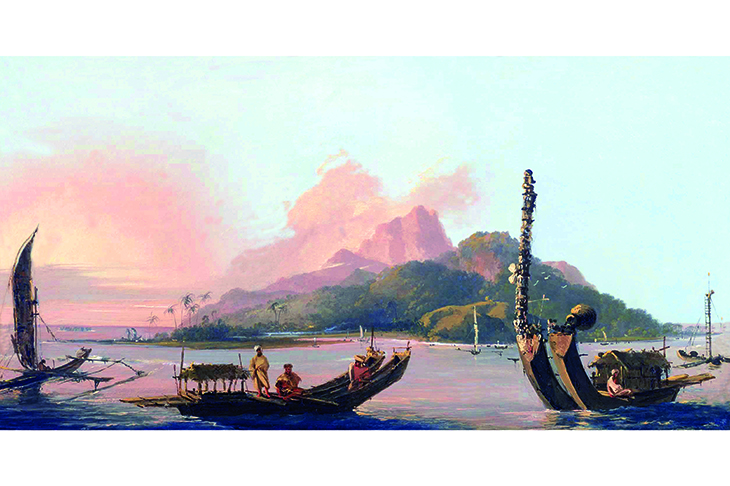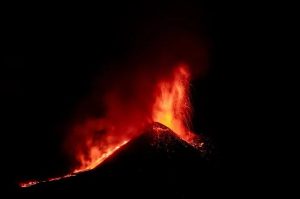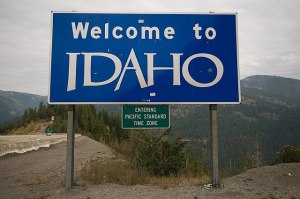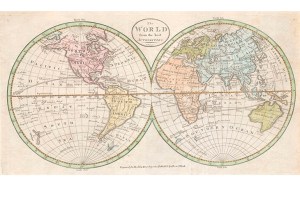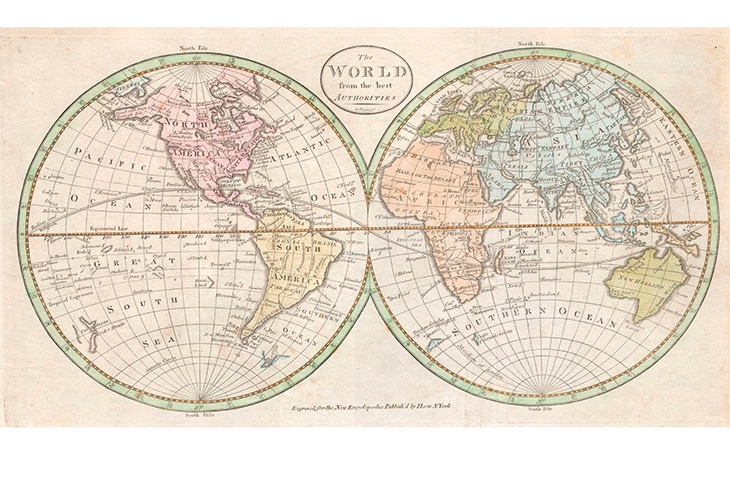Later this month, a boat builder from Lake Titicaca in Bolivia will fly to the Russian city of Sochi to begin work on a 40-foot craft made from papyrus reeds. A German-led expedition hopes Fermín Limachi’s construction skills will see them safely across the Black Sea and eventually on to Athens.
It is a mad idea, but not an entirely novel one. Nearly 50 years ago, Limachi’s father was persuaded by the Norwegian explorer and ethnographer Thor Heyerdahl to embark on something very similar. But the route back then was from Morocco to South America, a journey of some 6,100km.
Heyerdahl is one of the dozens of fascinating — and often slightly kooky — characters to fill the pages of this eminently scholarly and ever-surprising book. From Captains Cook and Bligh (of Bounty fame) onwards, all these individuals are linked by a single thread: a collective wonderment as to how the islands of the vast Pacific Ocean came to be inhabited. The question is, by Christina Thompson’s reckoning, ‘one of the great geographical mysteries of mankind’. The Polynesian Triangle, a space bounded by the islands of Hawaii, Easter Island and New Zealand, spreads over two million square km.
So just how did the Polynesians populate the hundreds of islands and atolls in this ‘not only so vast, but so empty’ oceanic space? The centuries have thrown up a number of theories. Heyerdahl, for example, was convinced that the early settlers were Incas from South America (a belief built almost exclusively on the presence in Polynesia of the sweet potato, a vegetable indigenous to the Americas). Others theorized that Polynesia was settled by the ancient Greeks or seafaring Egyptians or even a lost tribe of wandering Jews. Spoiler: they were, in all probability, migrants from Asia who, after a two-millennium stop-over in Tonga and Samoa, ventured further westward around 1,000 ad.
Scientifically speaking, the resolution of the so-called ‘problem of Polynesian origins’ is important. The record needs to be set straight. But a quick Wikipedia search can tell you that much: it doesn’t need an entire book.
Which is why Christina Thompson, editor of the Harvard Review and wife of a Maori, does not dally too much with the facts as they stand. What interests her is how today’s established ‘facts’ have been arrived at. As she puts it, the story of Polynesia’s settlement is less about what happened and more about how we know what happened. Sea People is, at heart, a tale about the history of knowledge: how it is gained, how it is corroborated or challenged, and how, above all, it is shaped by the knowledge-makers themselves.
Like a donnish whodunnit (Thompson’s prose is engaging, but distinctly authoritative), the question of Polynesia’s origins is examined through successive historic epochs. First come the European explorers, whose first-hand descriptions provide a tantalizing glimpse into the lives and customs of these ‘untouched’ people groups. Similarities in physiology, material cultures and language persuade them rightly of a common ancestry.
But how so? It would take the combined efforts of the Spanish, French, Dutch and British two centuries properly to map the territories of the Pacific. To their mind, it was a ‘mockery’ to imagine that these primitive peoples, without sextants or charts, could have mastered the seas before them. The backstop option: they were ‘created in situ by God’.
The book’s successive sections introduce us to later Europeans, who, in the 19th century, begin to examine more seriously the stories that Polynesians told about themselves. For their skeptical successors, oral history gradually lost out to the ‘hard’ sciences, such as biometrics, comparative linguistics, carbon dating, early computer modeling and, most recently, DNA analysis. All fascinating stuff.
Where Sea People really breaks new ground is in Thompson’s ability to unpick not just the evolving (and sometimes revolving) research findings, but the personalities and prejudices of the researchers themselves. Time and again, she shows how insights were missed and opportunities lost because of the questioners’ inability to look outside their own cultural prism.
Generously, Thompson puts this down less to intellectual arrogance or pig-headedness (true though both are) and more to the inherent difficulty of seeing the world from another’s point of view. It is a problem of ‘translation’, she suggests: ‘not just from one language to another or from one culture to another, but from one way of thinking to another’.
It comes as no surprise, therefore, that the book’s heroes are both men who have learned how to straddle the cultural divide. One, Rangi Hiroa, who died in 1951, was a half-Irish, half-Maori anthropologist whose glittering career he himself put down to his ‘mongrel’ perspective. The other, Nainoa Thompson, is a Western-educated Hawaiian native whose ability to syncretize fact and intuition has established him as a master navigator of the old old school.
Sea People does a superb job of highlighting the cultural complexities inherent in knowledge creation. In arguing for European and Polynesian epistemologies to be considered together, rather than apart, it also shows how these complexities might best be managed — if not entirely overcome. An illuminating read for amateur sleuths and professional scholars alike.
This article was originally published in The Spectator magazine.



